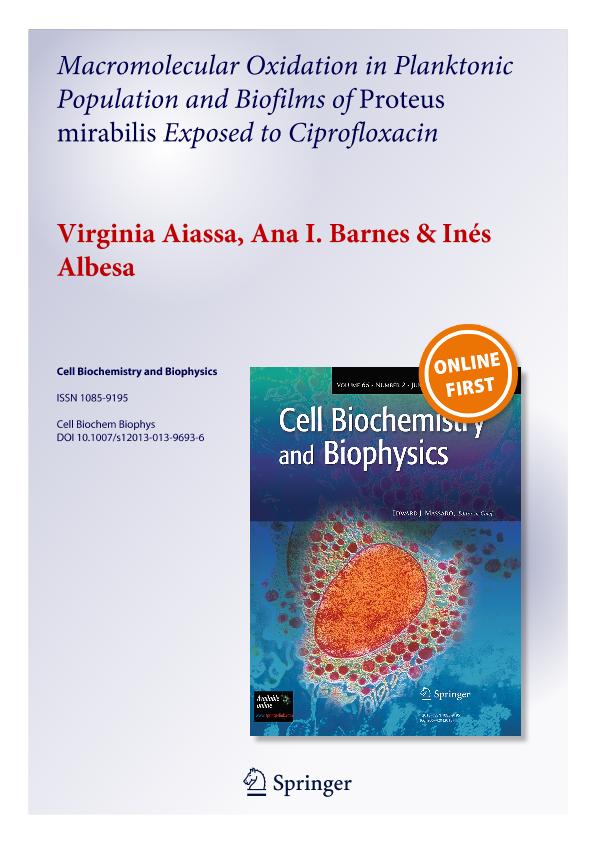Artículo
Macromolecular Oxidation in Planktonic Population and Biofilms of Proteus mirabilis Exposed to Ciprofloxacin
Fecha de publicación:
01/2014
Editorial:
Humana Press
Revista:
Cell Biochemistry and Biophysics
ISSN:
1085-9195
Idioma:
Inglés
Tipo de recurso:
Artículo publicado
Clasificación temática:
Resumen
Diverse chemical and physical agents can alter cellular functions associated with the oxidative metabolism, thus stimulating the production of reactive oxygen species (ROS). Proteins and lipids may be important targets of oxidation, and this may alter their functions in planktonic bacterial physiology. However, more research is necessary to determine the precise role of cellular stress and macromolecular oxidation in biofilms. The present study was designed to evaluate whether ciprofloxacin (CIP) could oxidize the lipids to malondialdehyde (MDA) and the proteins to carbonyl residues and to advanced oxidation protein products (AOPP) in planktonic populations and biofilms of Proteus mirabilis. Incubation with CIP generated an increase of lipid and protein oxidation in planktonic cells, with a greater effect found in sensitive strains than resistant ones. Biofilms showed higher basal levels of oxidized macromolecules than planktonic bacteria, but there was no significant enhancement of MDA, carbonyl, or AOPP with antibiotic. The results described in this article show the high basal levels of MDA, carbonyls, and AOPP, with aging and loss of proliferation of biofilms cells. The low response to the oxidative stress generated by CIP in biofilms helps to clarify the resistance to antibiotics of P. mirabilis when adhered to surfaces.
Archivos asociados
Licencia
Identificadores
Colecciones
Articulos(CCT - CORDOBA)
Articulos de CTRO.CIENTIFICO TECNOL.CONICET - CORDOBA
Articulos de CTRO.CIENTIFICO TECNOL.CONICET - CORDOBA
Citación
Aiassa, Virginia; Barnes, Ana Isabel; Albesa, Inés; Macromolecular Oxidation in Planktonic Population and Biofilms of Proteus mirabilis Exposed to Ciprofloxacin; Humana Press; Cell Biochemistry and Biophysics; 68; 1; 1-2014; 49-54
Compartir
Altmétricas




